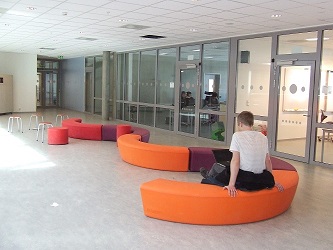Transparent Classrooms. New school buildings with extensive use of glass walls
DOI:
https://doi.org/10.7577/formakademisk.585Keywords:
school buildings, transparency, openness, glass walls, high schools, architect, teacherAbstract
This article discusses the openness and transparency in school buildings. I focus on new secondary schools constructed with transparency, flexible room solutions and extensive use of glass walls. With indoor glass walls, the various activities in the school became observable; teachers and students were also more visible to each other, for better or worse. An interpretation of the concept of transparency is central in the first part of the article. I analyse and discuss transparency as a concept and a phenomenon in architecture and relate this analysis to the school facilities. Based on a critical and realistic perspective, I raise questions about why transparent solutions with glass walls are chosen in new secondary schools. I discuss possible explanations, focus on the background for some perspective and highlight various arguments. Architects and teachers have different points of departure for their perception of transparency in school buildings. I also question politicians’ and school owners' desire for open and transparent school buildings. The article suggests that trends and tendencies play a role, and that a focus on transparency in school buildings also indicates an open culture.

Downloads
Published
How to Cite
Issue
Section
License
Authors who publish with this journal agree to the following terms:
- Authors retain copyright and grant the journal right of first publication with the work simultaneously licensed under a Creative Commons Attribution 4.0 License that allows others to share the work with an acknowledgement of the work's authorship and initial publication in this journal.
- Authors are able to enter into separate, additional contractual arrangements for the non-exclusive distribution of the journal's published version of the work (e.g., post it to an institutional repository or publish it in a book), with an acknowledgement of its initial publication in this journal.
- Authors are permitted and encouraged to post their work online (e.g., in institutional repositories or on their website) prior to and during the submission process, as it can lead to productive exchanges, as well as earlier and greater citation of published work (See The Effect of Open Access).
- The author(s) must manage their economic reproduction rights to any third party.
- The journal makes no financial or other compensation for submissions, unless a separate agreement regarding this matter has been made with the author(s).
- The journal is obliged to archive the manuscript (including metadata) in its originally published digital form for at least a suitable amount of time in which the manuscript can be accessed via a long-term archive for digital material, such as in the Norwegian universities’ institutional archives within the framework of the NORA partnership.
The material will be published OpenAccess with a Creative Commons 4.0 License which allows anyone to read, share and adapt the content, even commercially under the licence terms:
This work needs to be appropriately attributed/credited, a link must be provided to the CC-BY 4.0 licence, and changes made need to be indicated in a reasonable manner, but not in any way that suggests that the licensor endorses you or your use.



